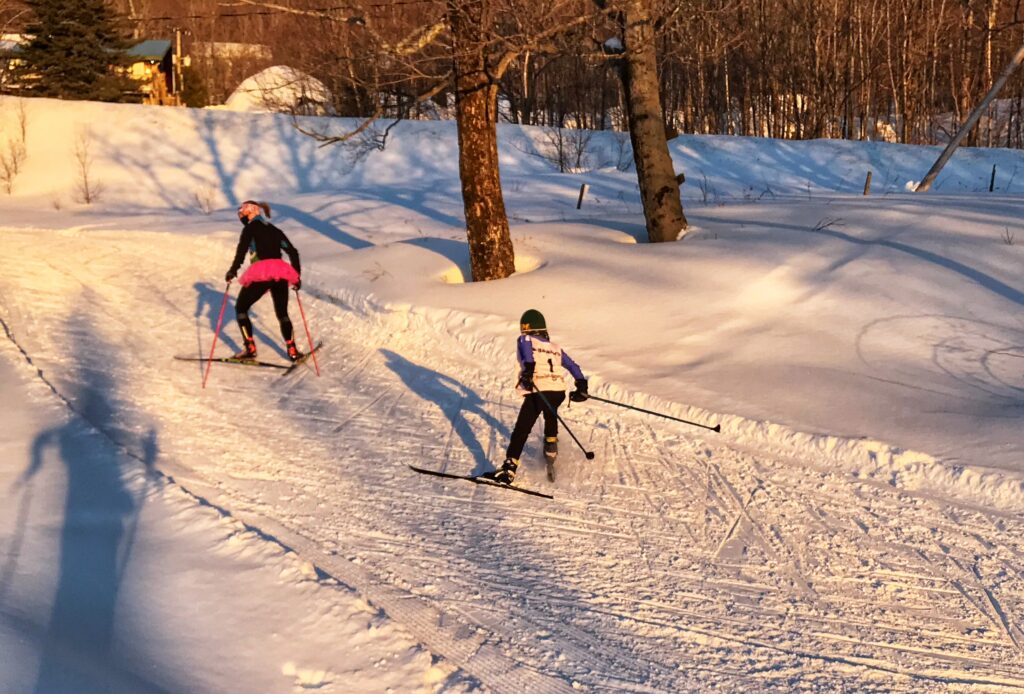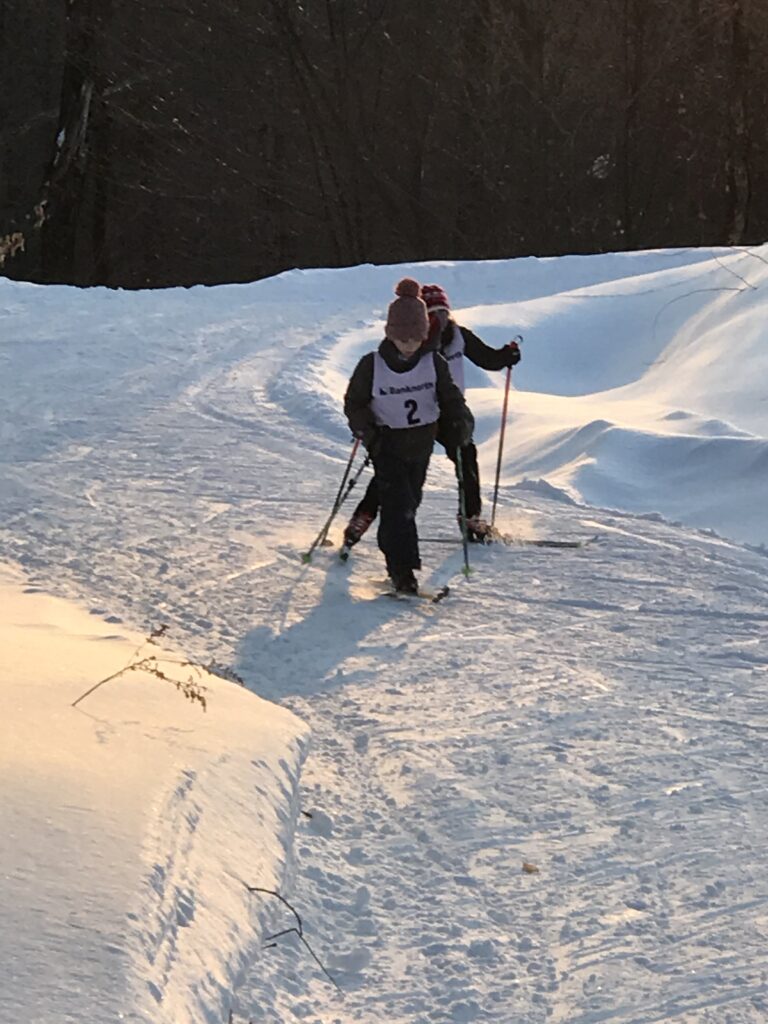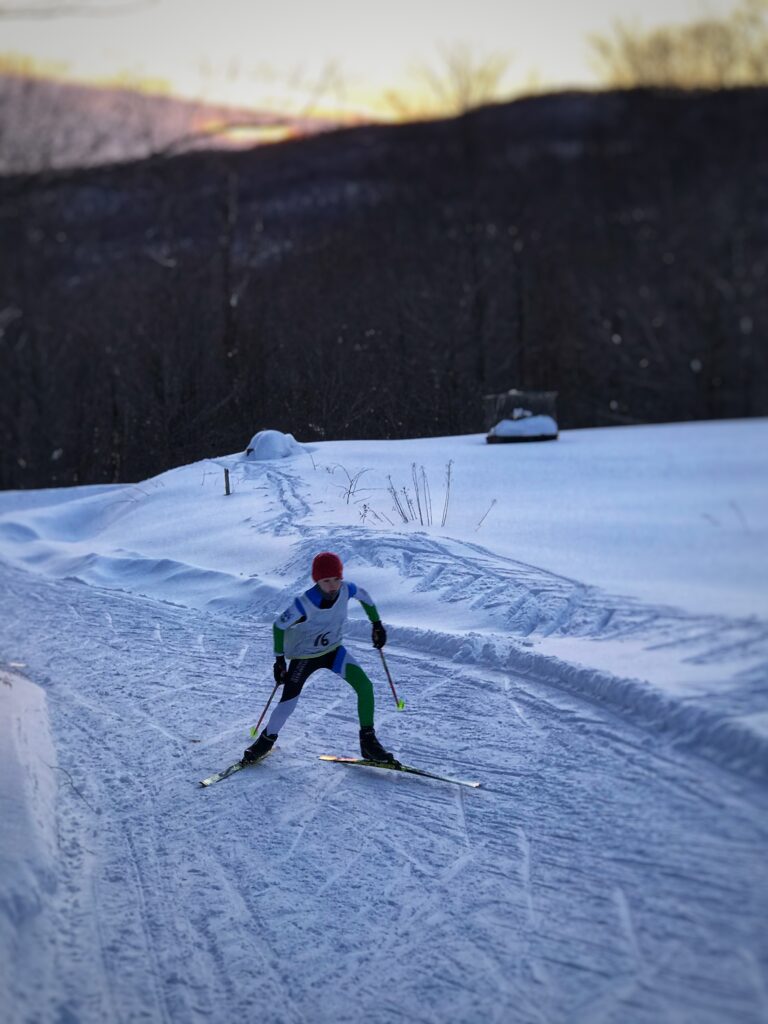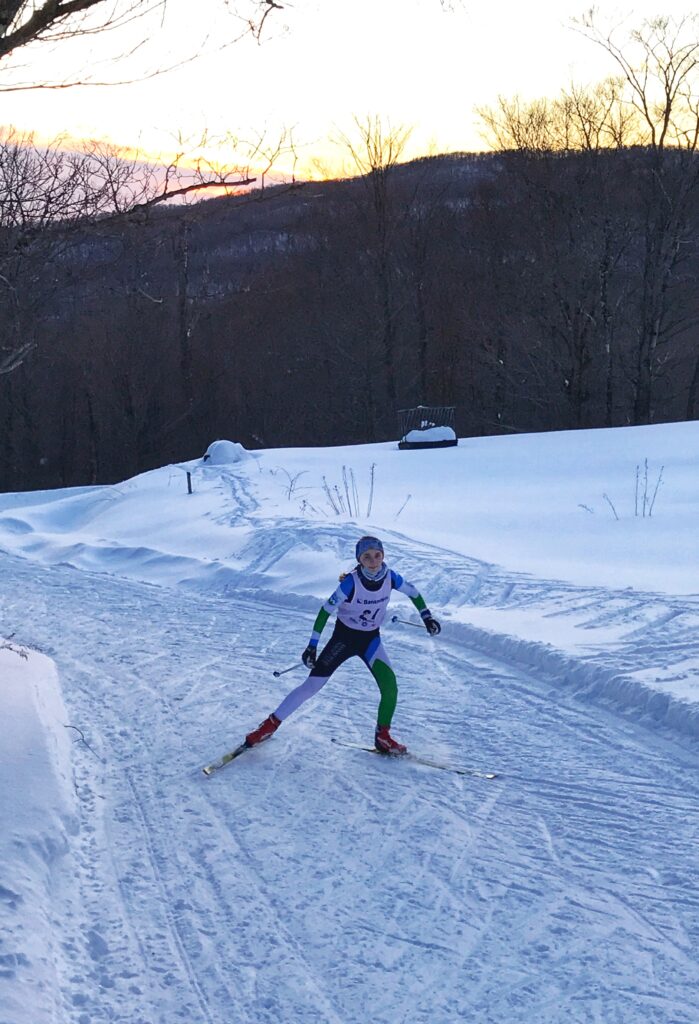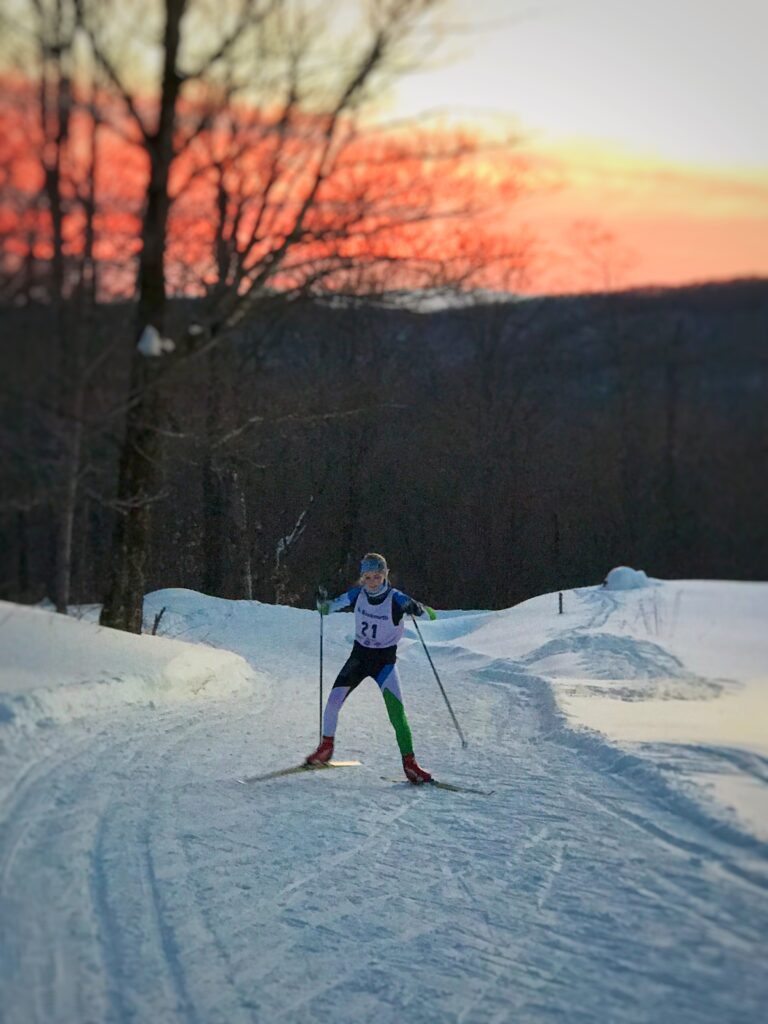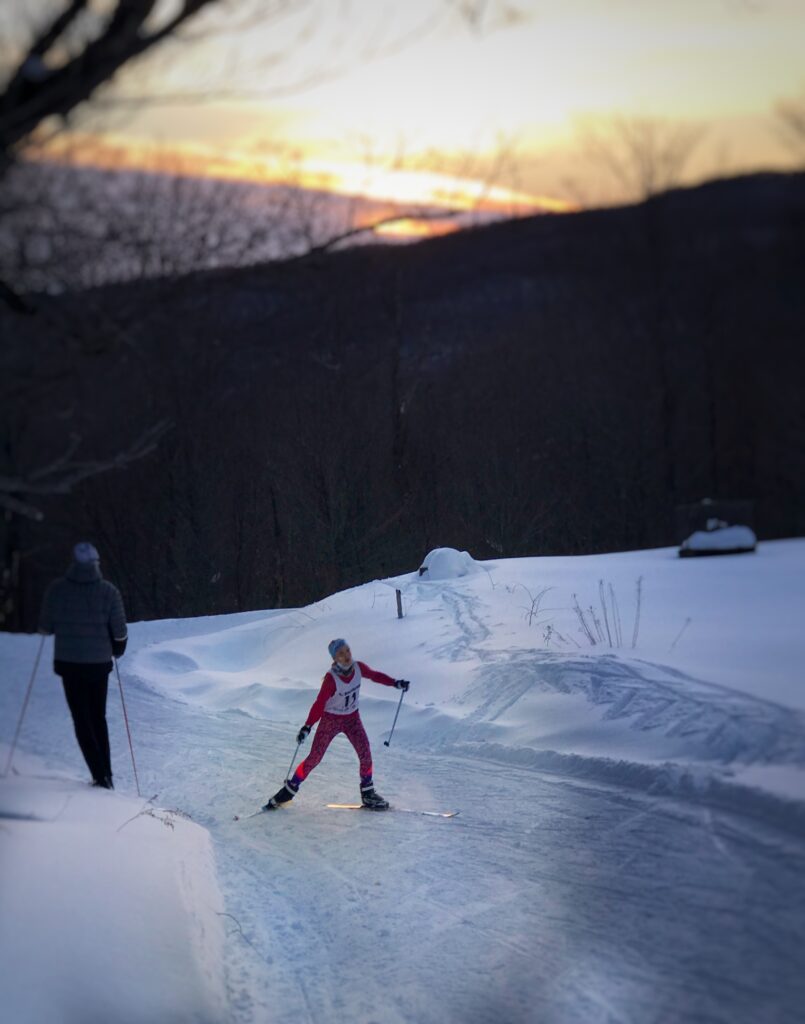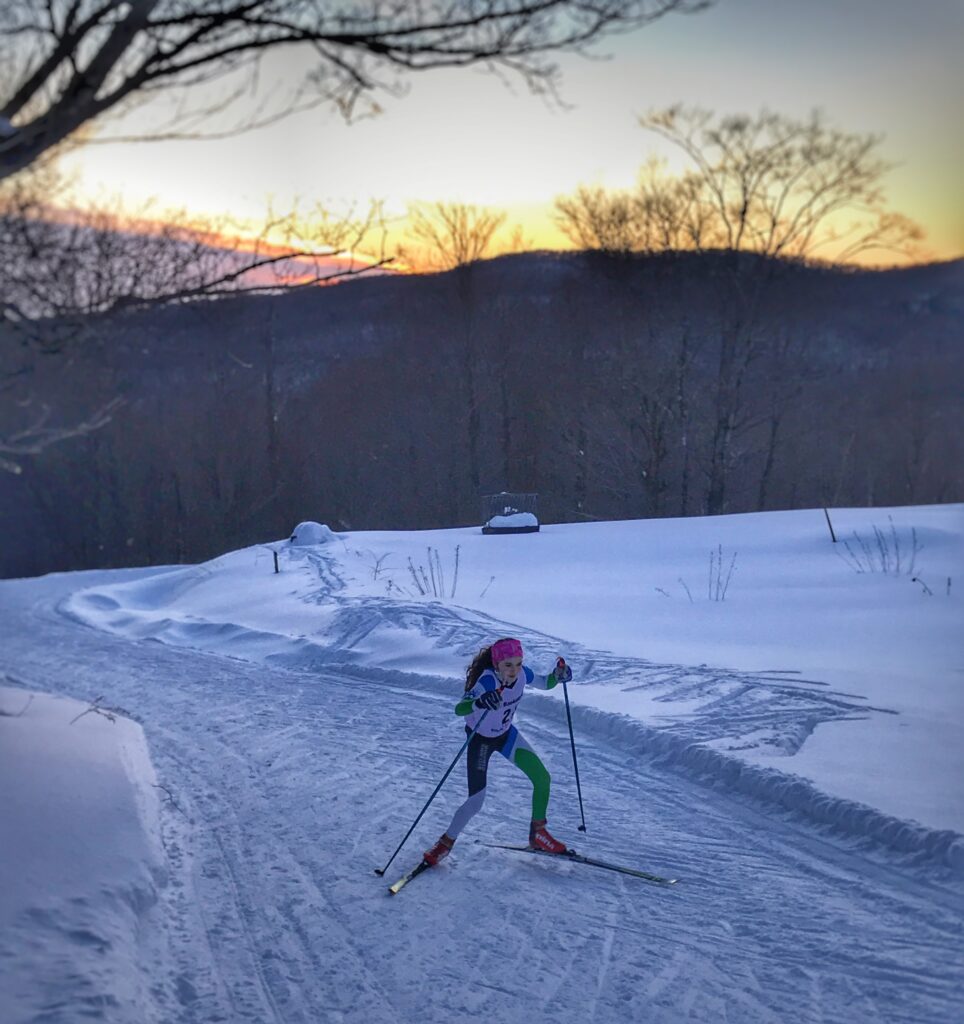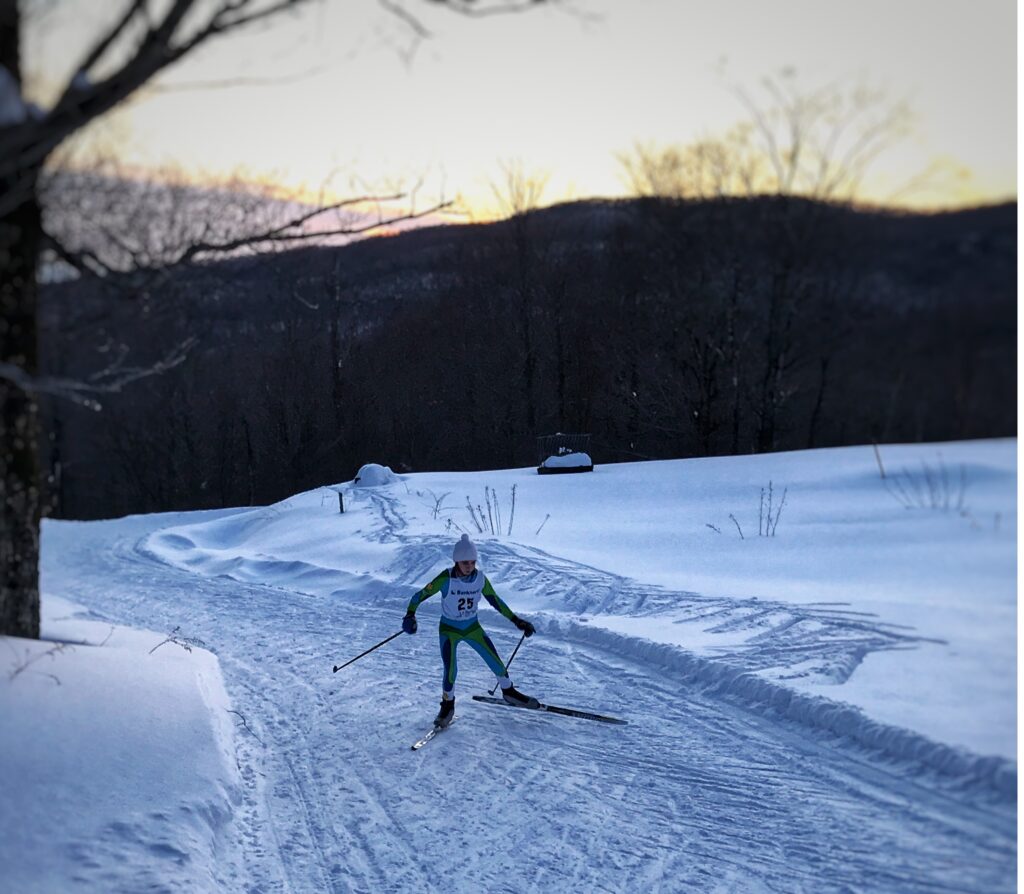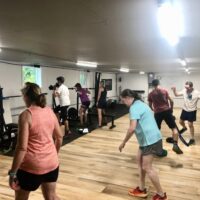This past week we had a couple chances for longer ski days, with school on break and some more free time during the daylight hours…oh, and good snow! On Wednesday during a 2-hour skate ski at Craftsbury I thought we would try something of a learning experience.
It was written down on the plan that everyone bring a snack to have during the ski, not just after. I picked up a box of granola bars ahead of time just to make sure we would all have some mid-ski fuel in case anyone forgot. Often on long skis I’ll bring along a box of fruit snacks to pass out, which serve to put in that little sugar-boost at the end of the workout…but really, we should be consciously consuming more calories than that if we’re out for over an hour.
I also started the workout with an announcement: I was going to use my heart rate monitor strap and watch to track my distance covered, average heart rate, and calories burned. A lot of us have heart rate monitors, but we seldom put them to use. Even in my case, it has become one of those things that I just put on because it “makes me feel like I’m a high-level athlete” and yet I rarely use the information it provides to the fullest.
Whether or not my device is accurate for calorie tracking, I don’t know. Mine is not the cheapest monitor out there, but it’s far from the most expensive. I’m guessing it tracks those calories through a combination of user-inputted stats like height, weight, age, and fitness level, along with workout data like average/max heart rate and distance covered.
“Counting calories” is a dangerous concept in and of itself. However I had a very basic hypothesis that I wanted to put out there: that we probably burn way more calories, even when skiing at low intensity, than we think we do.

At the one-hour mark in our ski, we took a short break to eat our snacks. I should note that Virginia made her own bars: she broke pieces off of to share and they were a huge hit. She sent me the recipe which you can find here. (Virginia noted that she used peanut butter instead of almond butter, FYI)
My own snack was just a common Nature Valley bar, the crunchy kind that comes with 2 bars per package. Both bars total up to 180 calories.
At the end of the ski, I concluded the workout on my watch and got the following data:

Again, the accuracy of the calorie count is not medically reliable. However, I have to assume it’s within a reasonable ballpark. And it’s worth noting that 800 calories is roughly the equivalent of 4 Nature Valley Bars burned over the course of that ski! Although this screenshot doesn’t show it, my average heart rate for the ski was 122 bpm, which is solidly in the “easy distance pace” category. I didn’t burn those 800 calories by busting my butt up the steepest hills or grinding out a grueling sweat-fest, although it was pleasantly warm and sunny out.
Calories are just a piece of the puzzle…there is a lot to be said about how fats, sugars, carbs, etc play into this whole discussion. As US Ski Team coach Matt Whitcomb likes to say, diving really deep into nutrition can be a point for the coaches to “defer to the experts” and so I will link this helpful article featuring Dr. Stephanie Howe Violett rather than try to educate on all of the ins-and-outs.
Right now, this is about keeping it very simple. Many of us only see calories as a negative and something to be avoided. In reality, they are fuel that helps us do the things we love! Ava recently brought back a candy bar from Finland where the nutritional info has “energy” rather than “calories” written on the label and I really like that as a way to think of it! Nothing makes that more apparent than their actual definition, which you may remember from 9th grade science class…a calorie is
“…the amount of heat required at a pressure of one atmosphere to raise the temperature of one gram of water one degree Celsius…”
Calories are literally energy for your body to use. Heat and energy that can raise the temperature of water! That’s some POWER that we can use for our skiing and daily life alike!
So, in addition to all the calories our bodies burn by just being living, breathing humans (literally…breathing requires calories, as does driving a car or even typing this blog post), my ski burned through an additional 800+ calories. By consuming about 200 calories mid-ski, I definitely helped to keep myself feeling good for longer into the workout. It also meant I was jump-starting the road to replenishing those 800+ calories at the end of the ski, when my body needed to get fuel back in order to recover and build back from that effort…after all, I have to ski again tomorrow. Nutrition labels often say they are “based on a 2,000 calorie diet” and yet skiers often need to be refueling with more than that given our activity levels.
Hopefully, this post and this simple experiment in data collection help share a simple and well-intentioned concept: skiing takes a lot of energy, so we need to always be fueled-up before/during/after to make sure we can get the most out of it.
I do NOT think we all need to be wearing monitors and tracking every last detail of every last workout, especially the calories.
What can we all do? Please don’t hesitate to follow the links or resources here to learn from/speak with some of the experts in the field. Read information that has been researched and reviewed, and keep a positive mindset on fueling! I’m not a sports nutritionist or a resource for dietary health in any way. For a great local resource, please don’t hesitate to contact awesome athlete/nutrition director/personal trainer/friend-of-the-Pugs Jamie Sheahan (jsheahan@edgevt.com).














